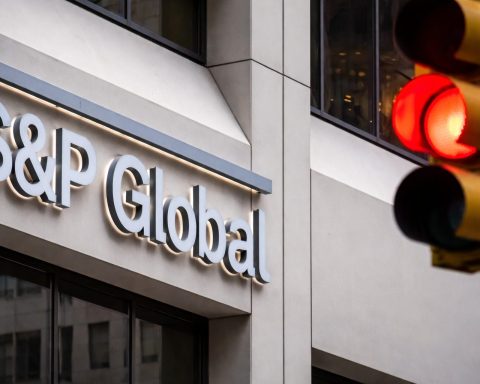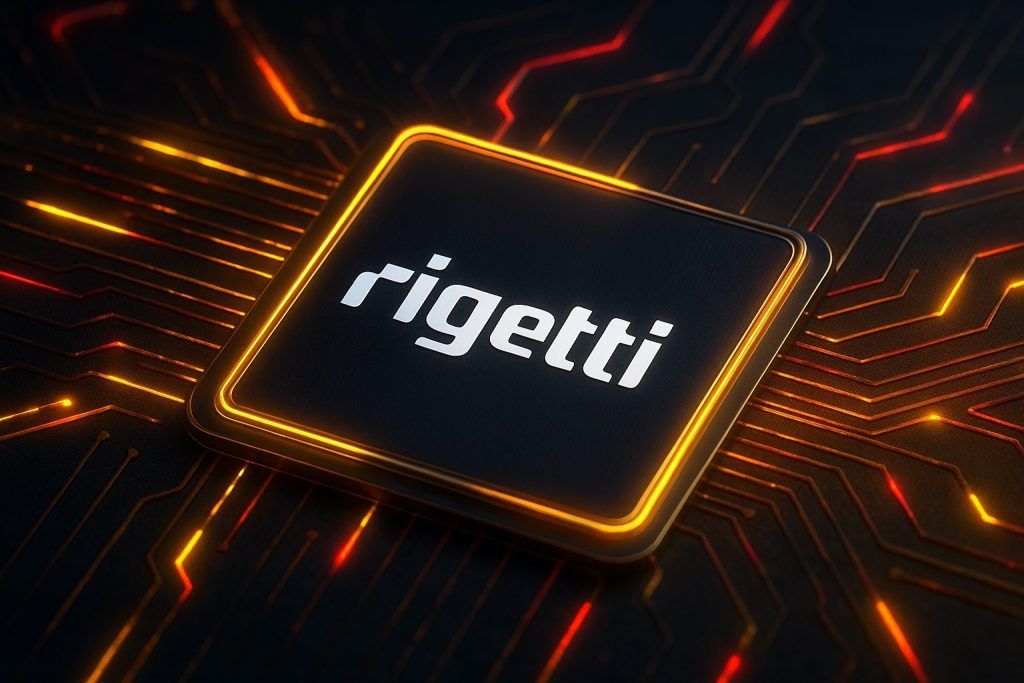VisionSys AI Inc. (NASDAQ: VSA) has become one of Wall Street’s most talked‑about micro‑caps after its shares collapsed nearly 78% in a single session, wiping out most of its recent gains and putting fresh scrutiny on the company’s aggressive capital‑raising and crypto‑treasury ambitions. [1]
As of early Thursday trading, the stock is hovering around $0.28 with heavy volume, slightly below Wednesday’s close at $0.29, keeping VisionSys firmly among the market’s biggest losers heading into a crucial extraordinary general meeting (EGM) scheduled for today in New York. [2]
Stock in Freefall: From Micro‑Cap Momentum to Nasdaq’s Worst Performer
VisionSys AI’s collapse has been dramatic even by speculative tech standards:
- On November 12, the stock closed at $0.29, down 77.69% on the day, after trading as low as $0.24. [3]
- A market wrap from Investing.com listed VisionSys AI as the worst performer on the Nasdaq Composite, down 77.69% to $0.29. [4]
- Over the past five days, shares have lost roughly 88% of their value, according to price history data and crypto‑media coverage. [5]
Indian business daily The Economic Times also highlighted VisionSys among U.S. market standouts — but on the wrong side of the ledger — noting that the stock “plunged nearly 80%” while other names were posting double‑digit gains. [6]
Social‑media chatter has exploded: a Reddit sentiment tracker shows VisionSys AI mentions up roughly 700% across popular trading subreddits, reflecting intense retail interest in the collapse and the company’s exotic crypto‑treasury plans. [7]
The Trigger: A Highly Dilutive $12 Million Registered Direct Offering
The selling wave began when VisionSys AI announced a $12 million registered direct offering of American Depositary Shares (ADS) and warrants with institutional investors. [8]
Key terms of the deal:
- 9,230,750 ADS plus accompanying warrants to purchase an equal number of ADSs.
- Each “unit” (one ADS + one warrant) priced at $1.30, implying about $12 million in gross proceeds before fees and expenses. [9]
- Warrants:
- Immediately exercisable, expiring five years from issuance.
- Initial exercise price $1.30, subject to downward resets to $0.91 (First Reset Date) and $0.65 (Second Reset Date), with a floor price. [10]
- A “zero‑cash exercise” option: each warrant can be exchanged for three ADSs instead of paying cash. [11]
The transaction is being handled by Maxim Group LLC as sole placement agent and is expected to close on or about November 13, 2025, subject to customary closing conditions. [12]
From an investor’s perspective, the structure is deeply dilutive: if all warrants are ultimately exercised via the three‑for‑one exchange, VisionSys could issue up to four times as many ADSs as the base 9.23 million sold in the deal, dramatically enlarging the ADS float over time.
Why the Market Is Alarmed About Dilution
This week’s offering does not occur in a vacuum. VisionSys AI has already leaned heavily on equity financing:
- A recent analysis of a September private placement notes that the company raised just $2 million while ending up with more than 11.2 billion Class A shares and 360 million Class B shares outstanding — a capital structure described as “massively dilutive.” [13]
- Based on that prior transaction, the outstanding ordinary shares already number in the tens of billions, even before the new ADS and warrant issuance. [14]
Against that backdrop, the registered direct offering — with embedded reset features and a high‑powered, zero‑cash exercise option — reinforces fears that existing shareholders will see their ownership stake diluted again and again.
Several financial outlets, including Investing.com and CoinCentral, framed Wednesday’s sell‑off explicitly as a reaction to a “highly dilutive” deal, underscoring how sensitive the market has become to VisionSys AI’s funding tactics. [15]
Today’s Extraordinary General Meeting: Big Share Structure Changes on the Table
Adding to the tension, VisionSys AI shareholders are scheduled to gather today at 12:00 p.m. ET in New York for an Extraordinary General Meeting at 2 Hammarskjold Plaza. [16]
According to the official EGM notice and proxy materials filed with the U.S. Securities and Exchange Commission, the agenda includes four major proposals: [17]
- 50‑for‑1 Share Consolidation
- Every 50 existing Class A and Class B ordinary shares would be consolidated into 1 new share with a higher par value.
- Post‑consolidation, the authorized share capital would be reset to 1 billion shares (860M Class A, 40M Class B, 100M “blank‑check” shares).
- Massive Increase in Authorized Share Capital
- Subject to the consolidation, the Board is seeking shareholder approval to raise authorized share capital to $10 billion par, equivalent to 10 billion shares.
- Of these, 9.86 billion would be Class A ordinary shares, significantly expanding the capacity for future equity issuance. [18]
- Super‑Voting Class B and Conversion Rights The company is also asking investors to approve a new capital structure with powerful governance implications: [19]
- Each Class B share would carry 100 votes at shareholder meetings.
- Each Class A share could be converted into one Class B share at the holder’s option, subject to Board approval.
- The Articles of Association would be amended to codify these rights.
- Transition to “Scripless” Shares
- VisionSys is seeking ratification of a move away from physical share certificates, relying instead on electronic (“scripless”) share records.
- The Board argues this will improve administrative efficiency without changing shareholder rights. [20]
At the time of writing, voting results have not yet been disclosed, so investors are trading into the meeting without knowing whether the share consolidation and expanded authorizations will be approved.
A Bold $2 Billion Solana Treasury Vision — Still Mostly on Paper
Part of VisionSys AI’s newfound visibility comes from its startling pivot into digital assets.
On October 1, the company announced plans to build a Solana (SOL) treasury of up to $2 billion, in exclusive partnership with Solana staking protocol Marinade Finance. The plan called for acquiring and staking $500 million of SOL in the first six months, which would make VisionSys AI the largest publicly traded holder of Solana if fully executed. [21]
Crypto outlet Decrypt highlighted that:
- VisionSys shares had already dropped about 40% on the initial Solana‑treasury news.
- As of its November 12 reporting, the company had not disclosed any actual SOL purchases, leaving investors unsure whether the headline figure will materialize. [22]
The new $12 million equity raise, while small relative to the “up to $2 billion” goal, is widely seen as part of a broader financing puzzle to support that strategy — or, at minimum, to keep the company afloat while it tries to pivot from its legacy education roots.
From Kids’ IT Education to Brain‑Machine Interfaces and Web3
VisionSys AI is not a typical crypto or AI startup. Until recently, it operated as TCTM Kids IT Education Inc., a provider of IT and STEM education services in China. [23]
In September 2025, the company formally changed its name to VisionSys AI Inc., signalling a strategic move toward: [24]
- “Brain‑machine interaction” technologies
- AI‑driven software and hardware systems
- Blockchain and digital‑asset treasury strategies
To support that pivot, VisionSys has:
- Appointed Hakob Sirounian as Chief Strategy Officer, with a mandate to drive blockchain and decentralized‑finance initiatives. [25]
- Brought on Tom Trowbridge, a well‑known blockchain investor and Solana ecosystem figure, as Senior Advisor to “drive digital currency treasury strategy.” [26]
At the same time, governance has been in flux. A November 6 Form 6‑K disclosed that Chairman Shaoyun Han resigned effective November 3, 2025 for personal reasons, with the Board now seeking a replacement to remain in line with Nasdaq listing requirements. [27]
How Markets and Traders Are Reading Today’s Setup
Between the dilutive deal, complex share‑structure proposals, and an unproven $2 billion Solana‑treasury ambition, VisionSys AI has hit a perfect storm:
- Traditional equity investors are focused on dilution risk and governance, wary of a structure that simultaneously consolidates shares and then massively boosts authorized capital with super‑voting rights. [28]
- Crypto and AI speculators are intrigued by the Solana treasury concept but concerned that, so far, it remains mostly aspirational — and that the company is funding its shift through serial equity issuance. [29]
- Short‑term traders see a textbook volatility play: a micro‑cap that just lost nearly four‑fifths of its value in a day, is trending on Reddit, and is the subject of intense media coverage from both financial and crypto outlets. [30]
Key Questions for Investors After the Crash
For anyone following VSA, today’s combination of EGM and ongoing offering raises several big questions:
- Share structure & control:
Will shareholders approve the consolidation, 10 billion‑share authorization, and 100‑vote Class B structure — and, if so, who ultimately controls those super‑voting shares? [31] - Future dilution:
With billions of authorized shares and a track record of heavy share issuance, how many more capital raises might be coming if VisionSys continues to finance strategy via equity? [32] - Execution of the Solana plan:
Can the company actually source financing for an “up to $2 billion” SOL treasury, and will regulators and investors be comfortable with a listed company functioning as a giant on‑chain treasury? [33] - Core business fundamentals:
Beyond headlines, what does revenue, cash burn and profitability look like as VisionSys transitions from legacy education operations into brain‑machine interfaces and Web3, and how sustainable is that shift? [34]
For now, the market’s verdict is clear: confidence has been badly shaken, and VisionSys AI will need more than bold announcements to rebuild trust.
Important Note
This article is for information and news purposes only and does not constitute investment advice. Investors should review the company’s official SEC filings, press releases, and consult a qualified financial adviser before making any investment decisions.
References
1. stockanalysis.com, 2. archive.fast-edgar.com, 3. stockanalysis.com, 4. in.investing.com, 5. decrypt.co, 6. m.economictimes.com, 7. chartexchange.com, 8. www.nasdaq.com, 9. www.stocktitan.net, 10. www.stocktitan.net, 11. www.stocktitan.net, 12. www.nasdaq.com, 13. www.panabee.com, 14. www.panabee.com, 15. m.investing.com, 16. www.sec.gov, 17. archive.fast-edgar.com, 18. archive.fast-edgar.com, 19. archive.fast-edgar.com, 20. archive.fast-edgar.com, 21. www.prnewswire.com, 22. decrypt.co, 23. www.marketscreener.com, 24. finance.yahoo.com, 25. www.prnewswire.com, 26. www.prnewswire.com, 27. www.stockinsights.ai, 28. archive.fast-edgar.com, 29. decrypt.co, 30. coincentral.com, 31. archive.fast-edgar.com, 32. www.panabee.com, 33. www.prnewswire.com, 34. www.stocktitan.net







